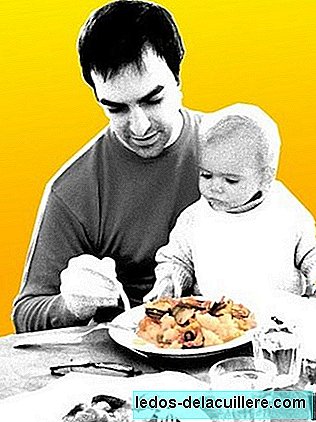Everyone, young and old, has our preferences when it comes to eating. We love some foods, we hate others and in the middle would be that large amount of food that we usually eat with pleasure (or without disgust). But, How do food preferences arise in children? Are they determined from the womb? Can they be modified?
Food preferences are learned through experience with food and food, even before birth, because in the mother's womb, the flavors of the food taken by the mother arrive through the amniotic fluid.
For this reason, tastes are not universal and they can also be modified, which will be much easier the earlier the child's age. Hence the importance of avoiding not offering our children food that we do not like or "camouflage" the vegetables. It is best to experiment and try everything that is right for your health.
The concept of food preference implies a situation of choice and refers to which of two or more foods is chosen, thus differing from the term of "taste", since it refers to an affective response to food and constitutes one of the determinants of preference.
AdvertisingFor other authors, food preferences refer to certain foods that people like to eat, although this does not necessarily mean that they will eat them; or also a specific choice of a certain food or drink from among those available. Let's see what factors will determine children's food preferences.
Factors that determine food aversions and preferences
Food aversions and preferences are determinants in eating behavior of children (and in all), because if they don't like something they will tend not to eat it.
Probably the main determinant of what is eaten is the accessibility of certain foods, but regardless of this, the influence of biological, economic, psychological, social, cultural factors ... on the choice of food can be observed.
Biology: it is found that humans, as omnivorous beings, have few innate food preferences. However, there are some genetically determined predispositions.
Genetics: a greater similarity has been found in the food preferences of monozygotic twins, than those existing in hetero-zygotic twins.
There is another predisposition with a genetic basis, which is the ambivalent response that can occur in humans in the presence of a new food for him. A mixture of interest (neophilia) and fear (neophobia). Various studies show that this fear, this dislike of new tastes, exists in young children and even in adult individuals.
Nausea and vomiting or other adverse gastrointestinal consequences produced after ingestion of a food are particularly decisive factors in humans, for the production of an acquired food aversion. This assigns a primary role to experience and learning when establishing preferred meals and consumption patterns.
On the other hand, the social and cultural factors exert a predominant influence on food preferences. We probably don't prefer maguey worms because this type of food is not eaten here. In other places prawns and crustaceans are seen as something that would never be put into your mouth. Humans have created a culture that allows them to convey all nutritional beliefs, values, preferences and forms of food preparation and service. Social pressures such as food to which the child has access, customs ... force exposure to food, and exposure stimulates taste.

Taste for the sweet and dislike for the bitter
Many children will probably prefer a banana to an artichoke, and so on with many other sweet and bitter foods. Among the biological factors that we have seen before, we must highlight the innate preference towards the sweet taste and the tendency to manifest an aversion to bitter taste.
Salty is also in second place at the time of the first preferences, that is why many children when they receive complementary food cost them so much. There are studies that demonstrated years ago that by supplying newborns with certain bitter solutions (poor babies), they showed their disgust by facial expressions, while demonstrating pleasant expressions if they were given sweet-tasting solutions.
The bitter taste probably indicates something dangerous to our health (bitter tastes in nature often indicate toxicity, they are associated with the poisonous). Evolution would have allowed an innate preference for sweet taste (indicator of high calorie content), which would have meant an advantage in evolution favoring the consumption of more caloric and nutritious foods.
However, and returning to social and educational factors, although food preferences are forming since they are small, later it is not too late to modify them. Also in adolescence changes can occur towards a healthier food consumption, since with age the range of proven foods widens by decreasing neophobia and increasing their autonomy in relation to food and food.
In this sense it is important to set an example for children with the family's eating habits, and although this is easier to carry out at an early age, even when they grow up, changes can occur towards healthier food consumption.
Neophobia is a fear derived in most cases from a rather poor diet in terms of flavors, so we must also try a varied menu. But, even before they sit at the table, before they are born, we can accustom them to new flavors and expand children's food preferences.












